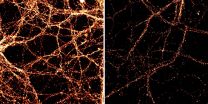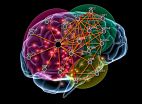(Press-News.org) Although closely related to the notorious carnivore Tyrannosaurus rex, a new lineage of dinosaur discovered in Chile is proving to be an evolutionary jigsaw puzzle, as it preferred to graze upon plants.
Palaeontologists are referring to Chilesaurus diegosuarezi as a 'platypus' dinosaur because of its extremely bizarre combination of characters that include a proportionally small skull and feet more akin to primitive long-neck dinosaurs.
Chilesaurus diegosuarezi is nested within the theropod group of dinosaurs, the dinosaurian group that gathers the famous meat eaters Velociraptor, Carnotaurus and Tyrannosaurus, and from which birds today evolved. The presence of herbivorous theropods was up until now only known in close relatives of birds, but Chilesaurus shows that a meat-free diet was acquired much earlier than thought.
Chilesaurus diegosuarezi is named after the country where it was collected, as well as honouring Diego Suárez, the seven year old boy who discovered the bones. He discovered the fossil remains of this creature at the Toqui Formation in Aysén, south of Chilean Patagonia, in rocks deposited at the end of the Jurassic Period, approximately 145 million years ago.
Diego was in the region with his parents, Chilean geologists Manuel Suarez and Rita de la Cruz, who were studying rocks in the Chilean Patagonia, with the aim to better understand the formation of the Andes mountain range. Diego stumbled across the fossils while him and his sister, Macarena, were looking for decorative stones.
Due to Chilesaurus' unusual combination of characters, it was initially thought that Diego had uncovered several species. However, since Diego's find, more than a dozen Chilesaurus specimens have been excavated, including four complete skeletons - a first for the Jurassic Period in Chile - and they demonstrate that this dinosaur certainly combined a variety of unique anatomical traits.
Most of the specimens are the size of a turkey, but some isolated bones reveal that the maximum size of Chilesaurus was around three metres long. Chilean and Argentinian palaeontologists from institutions including the University of Birmingham, along with Diego's parents, have been studying these skeletons, with the findings published in full in Nature today (Monday 27 April).
Other features present in very different groups of dinosaurs Chilesaurus adopted were robust forelimbs similar to Jurassic theropods such as Allosaurus, although its hands were provided with two blunt fingers, unlike the sharp claws of fellow theropod Velociraptor. Chilesaurus' pelvic girdle resembles that of the ornithischian dinosaurs, whereas it is actually classified in the other basic dinosaur division - Saurischia.
The different parts of the body of Chilesaurus were adapted to a particular diet and way of life, which was similar to other groups of dinosaurs. As a result of these similar habits, different regions of the body of Chilesaurus evolved resembling those present in other, unrelated groups of dinosaurs, which is a phenomenon called evolutionary convergence.
Chilesaurus represents one of the most extreme cases of mosaic convergent evolution recorded in the history of life. For example, the teeth of Chilesaurus are very similar to those of primitive long-neck dinosaurs because they were selected over millions of years as a result of a similar diet between these two lineages of dinosaurs.
Martín Ezcurra, Researcher, School of Geography, Earth and Environmental Sciences, University of Birmingham said:
'Chilesaurus can be considered a 'platypus' dinosaur because different parts of its body resemble those of other dinosaur groups due to mosaic convergent evolution. In this process, a region or regions of an organism resemble others of unrelated species because of a similar mode of life and evolutionary pressures. Chilesaurus provides a good example of how evolution works in deep time and it is one of the most interesting cases of convergent evolution documented in the history of life.
'Chilesaurus shows how much data is still completely unknown about the early diversification of major dinosaur groups. This study will force palaeontologists to take more care in the future in the identification of fragmentary or isolated dinosaur bones. It comes as false relationship evidence may arise because of cases of convergent evolution, such as that present in Chilesaurus.'
Dr. Fernando Novas, Bernardino Rivadavia Natural Sciences Museum, Buenos Aires, Argentina, led the research on Chilesaurus and said:
'Chilesaurus is the first complete dinosaur from the Jurassic Period found in Chile and represents one of the most complete and anatomically correct documented theropod dinosaurs from the southern hemisphere. Although plant-eating theropods have been recorded in North America and Asia, this is the first time a theropod with this characteristic has been found in a southern landmass.
Chilesaurus was an odd plant-eating dinosaur only to be found in Chile. However, the recurrent discovery in beds of the Toqui Formation of its bones and skeletons clearly demonstrates that Chilesaurus was, by far, the most abundant dinosaur in southwest Patagonia 145 million years ago.'
INFORMATION:
If you're finding it difficult to stick to a weight-loss diet, scientists at the Howard Hughes Medical Institute's Janelia Research Campus say you can likely blame hunger-sensitive cells in your brain known as AGRP neurons. According to new experiments, these neurons are responsible for the unpleasant feelings of hunger that make snacking irresistible.
The negative emotions associated with hunger can make it hard to maintain a diet and lose weight, and these neurons help explain that struggle, says Scott Sternson, a group leader at Janelia. In an environment where food ...
Johns Hopkins scientists have discovered that neurons are risk takers: They use minor "DNA surgeries" to toggle their activity levels all day, every day. Since these activity levels are important in learning, memory and brain disorders, the researchers think their finding will shed light on a range of important questions. A summary of the study will be published online in the journal Nature Neuroscience on April 27.
"We used to think that once a cell reaches full maturation, its DNA is totally stable, including the molecular tags attached to it to control its genes and ...
Eating 3,000 mg per day of salt or more appears to have no adverse effect on blood pressure in adolescent girls, while those girls who consumed 2,400 mg per day or more of potassium had lower blood pressure at the end of adolescence, according to an article published online by JAMA Pediatrics.
The scientific community has historically believed most people in the United States consume too much salt in their diets. The current Dietary Guidelines for Americans recommends limiting sodium intake to less than 2,300 mg per day for healthy individuals between the ages of 2 and ...
Survivors of Hodgkin lymphoma appear to be at higher risk for cardiovascular diseases and both physicians and patients need to be aware of this increased risk, according to an article published online by JAMA Internal Medicine.
Hodgkin lymphoma (HL) is a curable cancer with 10-year survival rates exceeding 80 percent. Treatment for HL has been associated with increased risks for other cancers and cardiovascular diseases, and those later cardiovascular complications may be the consequence of radiotherapy and chemotherapy in HL treatment, according to the study background.
Flora ...
Researchers have developed a large-scale sequencing technique called Genome and Transcriptome Sequencing (G&T-seq) that reveals, simultaneously, the unique genome sequence of a single cell and the activity of genes within that single cell.
The study, published today in Nature Methods, has experimentally established for the first time that when a cell loses or gains a copy of a chromosome during cell division, the genes in that particular region of DNA show decreased or increased expression. While this has long been assumed by genetic researchers, it has not been seen ...
CHESTNUT HILL, MA (April 27, 2015) - Add water to a half-filled cup and the water level rises. This everyday experience reflects a positive material property of the water-cup system. But what if adding more water lowers the water level by deforming the cup? This would mean a negative compressibility.
Now, a quantum version of this phenomenon, called negative electronic compressibility (NEC), has been discovered, a team of researchers led by physicists at Boston College reports today in the online edition of the journal Nature Materials.
Physicists have long theorized ...
Reluctance to share data about personal energy use is likely to be a major obstacle when implementing 'smart' technologies designed to monitor use and support energy efficient behaviours, according to new research led by academics at The University of Nottingham.
The study, published online by the journal Nature Climate Change, found that while more than half of people quizzed would be willing to reduce their personal energy consumption, some were wary about sharing their information with third parties.
Increasing energy efficiency and encouraging flexible energy use ...
April 27, 2015 -- A new breast cancer gene has been identified in a study led by Women's College Hospital (WCH) researcher Dr. Mohammad Akbari, who is also an assistant professor with the Dalla Lana School of Public Health at the University of Toronto. The study, which was published online today in Nature Genetics, describes how mutations in a gene called RECQL are strongly linked to the onset of breast cancer in two populations of Polish and French-Canadian women.
"Our work is an exciting step in identifying all of the relevant genes that are associated with inherited ...
New York, New York -- A multi-year study led by researchers from the Simons Center for Data Analysis (SCDA) and major universities and medical schools has broken substantial new ground, establishing how genes work together within 144 different human tissues and cell types in carrying out those tissues' functions.
The paper, to be published online by Nature Genetics on April 27 (at http://dx.doi.org/10.1038/ng.3259), also demonstrates how computer science and statistical methods may combine to aggregate and analyze very large -- and stunningly diverse -- genomic 'big-data' ...
Researchers at NYU Langone Medical Center have discovered that mitochondria, the major energy source for most cells, also play an important role in stem cell development -- a purpose notably distinct from the tiny organelle's traditional job as the cell's main source of the adenosine triphosphate (ATP) energy needed for routine cell metabolism.
Specifically, the NYU Langone team found that blocking the action of the mitochondrial ATP synthase enzyme stalled egg cell development from stem cells in experiments in fruit flies, one of the main organisms used to study cell ...

